
This page last modified: 10 October 2015 (unit locality names section expanded)

26 units are listed as being under the command of the Master of the Soldiers in Illyricum (the numbers in front of the names refer to Ingo Maier's numbering scheme):
|
2 vexillationes comitatenses:
21.3 Equites sagittarii seniores |
1 legio palatina:
21.6 Britones seniores |
6 auxilia palatina:
21.8 Ascarii seniores |
8 legiones comitatenses:
21.15 Matiarii constantes |
9 pseudocomitatenses:
21.24 Timacenses auxiliarii |
Note that the Munich manuscript inserts a Balistarii Theodosiani between the Secundi Theodosiani and the Balistarii Theodosiani iuniores (while still stating there are 9 pseudocomitatenses units listed and not 10). Of the listed units, neither the shields of the 2 cavalry units nor any of those of the pseudocomitatenses units are illustrated. The shields of the 15 other infantry units are illustrated below from top to bottom, left to right, in the order given above, using the Bodleian manuscript (O) pictures.
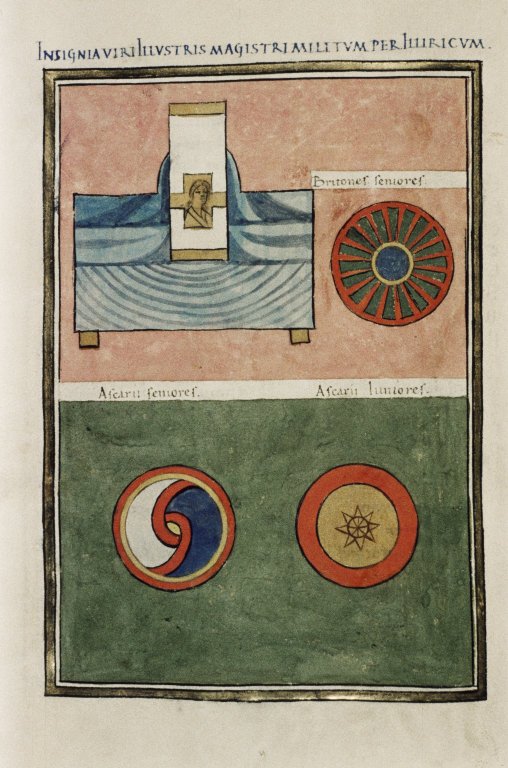
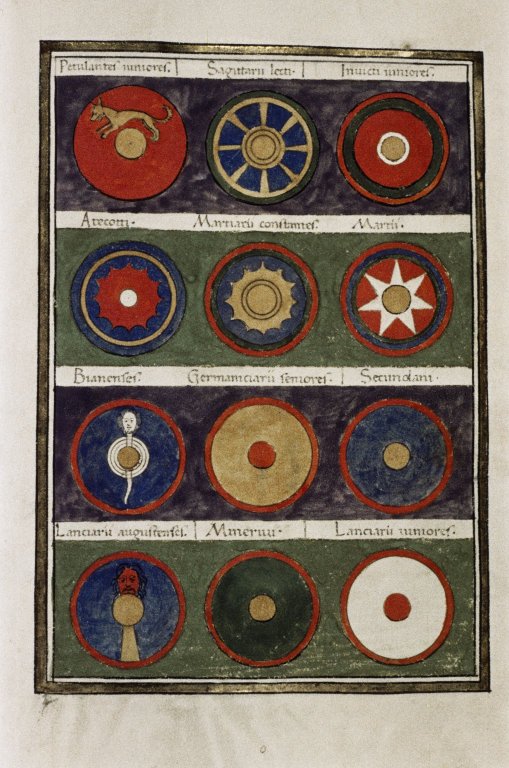
The eastern Illyrian command, like that of the western equivalent, under the Comes Illyricum, appears to reflect the turmoil in the Balkans at the time the Notitia was compiled: it appears to have suffered heavy losses in the relatively recent past as evidenced by the very high proportion of pseudocomitatenses units that have presumably been drafted into the force to bring it up to strength. The Scupenses, Ulpianenses, and the Merenses, for example, would appear to represent ex-garrison units from Scupi (modern Skopje in Macedonia), Ulpiana (in Kossovo), and Merion (modern location unsure), which together comprised the three cities of 6th century Dardania according to the Byzantine geographer Hierocles' Synekdemos. Similarly, the Timacenses auxiliarii appear to refer to a garrison unit from somewhere along the Timacus river (modern Timok in Serbia), while the Scampenses clearly comes from Scampi (modern Elbasan, Albania), and the Bugaracenses from Burgaraca (modern Lesnovo, Bulgaria).
Below are the same 15 units as illustrated in the Parisian manuscript, P.
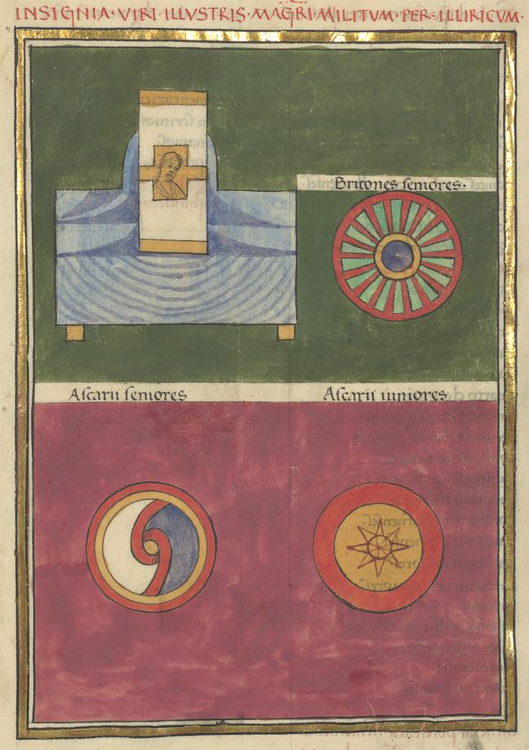
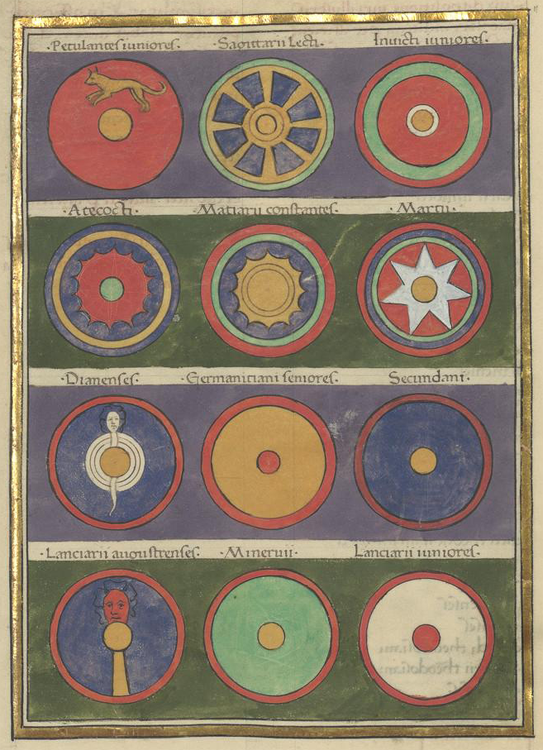
Below are the corresponding pictures from the Munich manuscript: first portion on top (M); second portion (W) below.
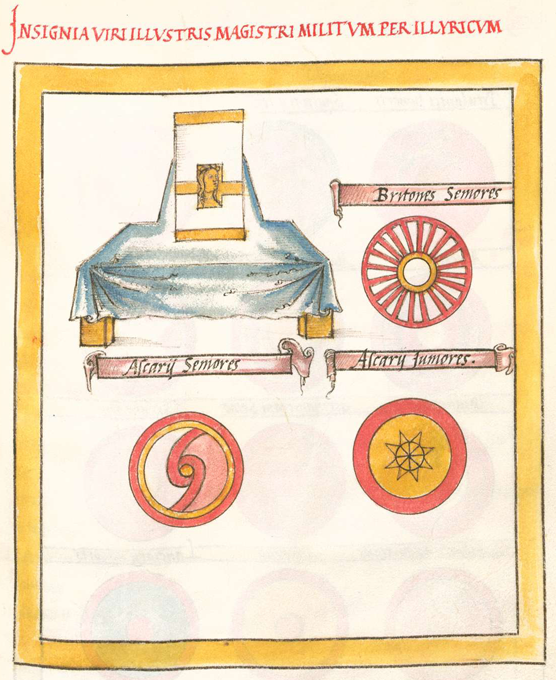
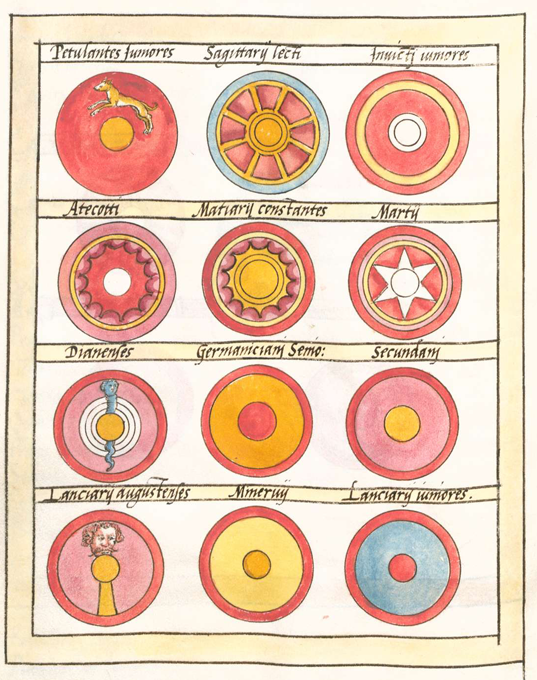
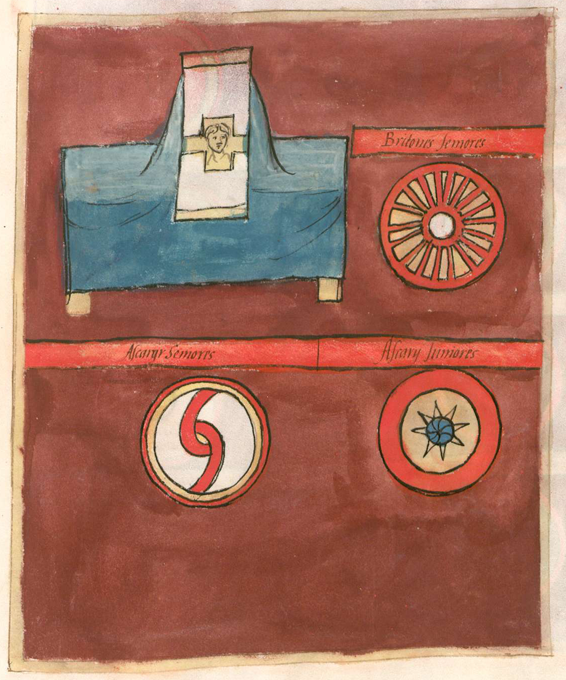
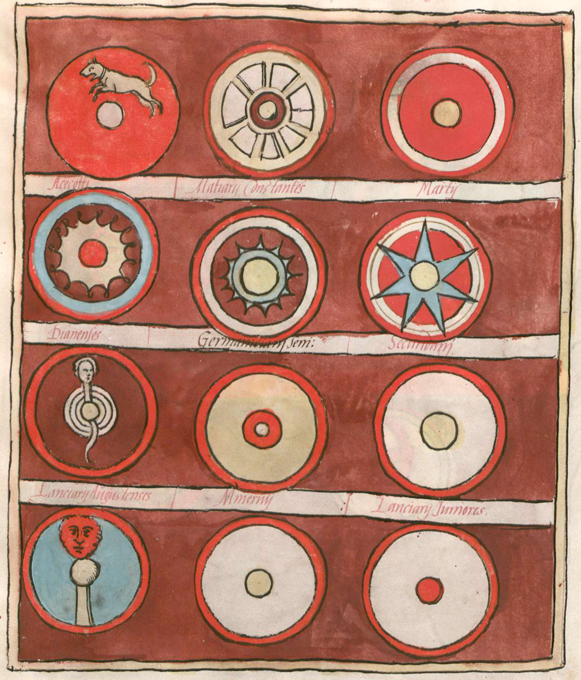
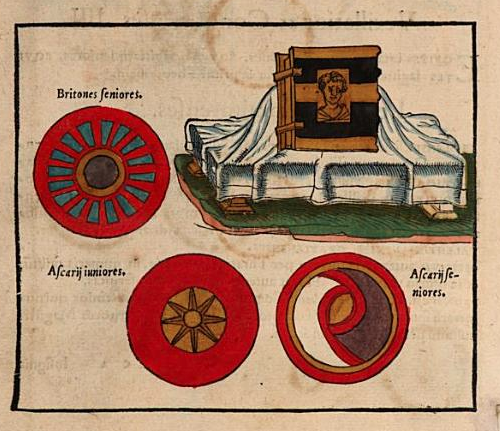
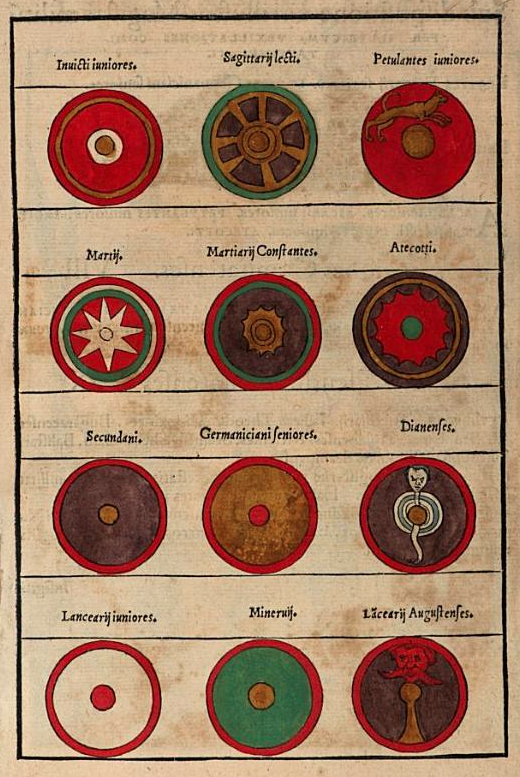
In addition to the units enumerated above, the Notitia gives the Magister's staff as follows:
21.35 A chief of staff (princeps)The Magister's staff are, like those of the Magister Militum Praesentalis I and the Magister Militum per Thracias, said to be drawn from those enrolled in his force; this differs from the staff of the Magister Militum Praesentalis II and the Magister Militum per Orientem, which are said to be permanent.
21.36 Two accountants (numerarii)
21.37 A custodian (commentariensis)
21.38 Chief clerks (primiscrinios) who become accountants
21.39 Clerks (scriniarios)
21.40 Secretaries (exceptores) and other attendants (apparitores)

Return to the Notitia index page.